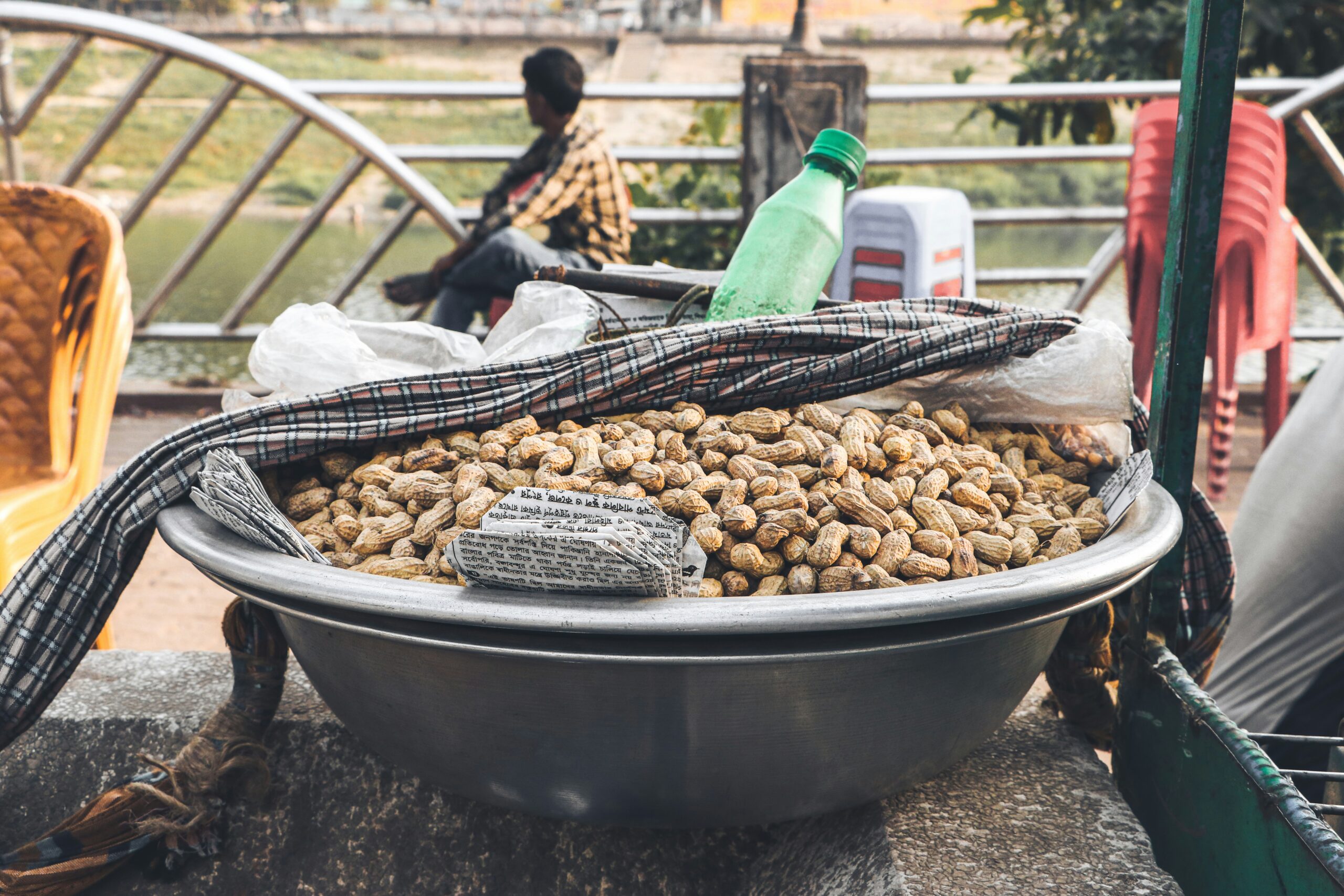Exploring the Delicious World of Street Foods in Thailand

Photo by Marwan Ahmed on Unsplash
Introduction to Thai Street Food
Thai street food is an integral part of the country’s culinary landscape, deeply woven into the fabric of everyday life. Renowned for its vibrant flavors and diverse offerings, Thai street food encapsulates the essence of local culture and tradition. From bustling markets to roadside stalls, street food vendors are a common sight, serving a myriad of dishes that are both delectable and affordable, making it accessible to everyone.
The significance of street food in Thailand extends beyond mere sustenance; it acts as a social hub where people gather, fostering community ties and interactions. Each dish often tells a story, reflecting the region’s unique ingredients and culinary techniques.
Popular items such as pad thai, som tam, and satay showcase the country’s rich culinary heritage, drawing inspiration from neighboring nations and local resources. The variety is staggering, with each vendor often presenting their twist on classic recipes, offering customers a taste of authenticity and creativity.
Moreover, street food vendors play a crucial role in the Thai economy. They provide employment opportunities and promote entrepreneurship, allowing individuals to start small businesses with minimal investment. This sector not only supports families but also contributes significantly to the urban economy, sustaining livelihoods within communities. The vibrancy of street food culture is also a testament to Thailand’s ability to adapt and thrive in a globalized world while preserving its unique identity.
In essence, Thai street food represents a living tradition that thrives amidst modernity, showcasing the country’s culinary diversity. The blend of affordability, flavor, and community spirit makes street food an essential aspect of life in Thailand, enhancing both the cultural and social dynamism of urban spaces.
Popular Thai Street Food Dishes to Try
Thai street food is renowned for its vibrant flavors and diverse offerings, capturing the essence of the country’s culinary excellence. Among the most iconic dishes is Pad Thai, a stir-fried noodle dish made from rice noodles, tamarind paste, fish sauce, dried shrimp, garlic, and a variety of vegetables. Typically topped with crushed peanuts, lime, and bean sprouts, Pad Thai is celebrated for its balance of sweet, sour, and savory tastes. Street vendors can be found throughout Thailand, particularly in Bangkok, serving delicious iterations of this beloved dish.
Another must-try is Som Tum, a fresh and spicy papaya salad that incorporates unripe papaya, tomatoes, green beans, peanuts, and a tart dressing made from lime juice and fish sauce. The combination of textures and flavors makes Som Tum a refreshing accompaniment to other street food dishes. You’ll often find Som Tum stalls bustling with locals, particularly in Isaan, the northeastern region of Thailand, where this dish originates.
For meat lovers, Moo Pad Krapow, or Basil Pork, is an exquisite choice. This dish consists of minced pork stir-fried with holy basil, garlic, and chili peppers, served over rice and often crowned with a fried egg. The aromatic basil and the dish’s heat provide a delightful complexity. Street vendors across Thailand, especially in urban areas, offer this dish, often at night markets where the aroma is irresistible.
Aside from these well-known favorites, each region in Thailand boasts unique specialties. For instance, in Chiang Mai, Khao Soi, a coconut curry noodle soup, stands out, while in southern provinces, you might encounter Nam Prik Goong, a spicy shrimp paste dip. To experience the depth of Thailand’s street food, venture into local markets, where authentic flavors await every food lover’s palate.
The Experience of Eating Street Food in Thailand
Eating street food in Thailand is a vibrant sensory adventure that captivates visitors and locals alike. As one wanders through the bustling markets, a medley of sights, sounds, and smells creates an atmosphere that is unmistakably unique. The air is filled with the enticing aromas of freshly prepared dishes, from sizzling skewers of grilled meat to aromatic bowls of steaming noodle soup. Each food stall offers a feast for the eyes, with colorful ingredients and artfully presented dishes that beckon one to indulge.
The visual appeal of the food is just as intoxicating as the fragrances. Vendors display their culinary creations in an easily accessible manner, often showcasing a variety of options all at once. Each plate invites customers to explore different tastes and flavors, from crispy spring rolls to sweet mango sticky rice. This diverse array enhances the experience, enabling hungry patrons to sample many dishes during a single outing.
Moreover, the act of dining on the street is inherently social. The communal aspect of sharing food among friends or fellow diners fosters a sense of connection and enjoyment. Patrons often find themselves seated next to locals, engaging in light conversation about their favorite dishes or the best stalls to visit. This interaction enriches the street food experience, transforming it into a cultural exchange. Similarly, interactions with passionate vendors add a personal touch, giving insights into the preparation methods and ingredients, which often leads to a deeper appreciation of the food.
While street food is an essential aspect of Thai cuisine, it is important to prioritize safety and hygiene. Observing the cleanliness of food stalls, opting for freshly cooked items, and choosing busy vendors are effective strategies to enjoy the street food scene without worry. The vibrant energy of night markets heightens the appeal, ensuring that each bite taken is not only delicious but also part of an unforgettable culinary journey.
Tips for Navigating Thai Street Food Safely
Experiencing street food in Thailand is an adventure filled with flavors, aromas, and cultural insights. However, it is essential to approach this culinary journey with a mindful attitude to ensure a safe and enjoyable experience. To safely savor the delights of Thai street food, consider the following tips.
One primary consideration when selecting food stalls is the turnover rate. Stalls that have a high volume of customers generally indicate fresher ingredients and faster food preparation. Observing locals enjoying their meals can be a reassuring sign of quality. Additionally, vibrant stalls with a variety of offerings often reflect the skill and reputation of the vendors. Avoiding stalls that appear neglected or lack patrons might help you steer clear of potential food safety issues.
Hygiene practices are another important aspect to consider. Look for vendors who maintain a clean working environment, wearing gloves and hair covers while preparing food. It is advisable to choose cooked dishes over raw items, as high temperatures effectively kill harmful bacteria. Foods such as grilled meats, fried items, or soups are typically safer bets. For individuals with dietary restrictions, verifying the ingredients is crucial. Many vendors are accommodating and can adjust dishes or suggest suitable alternatives.
Understanding local etiquette when ordering and eating is essential for a harmonious experience. In Thailand, it is polite to greet vendors with a smile and a friendly “sawasdee krub/kha.” Additionally, many locals enjoy sharing food, so consider trying dishes that can be easily shared with friends or fellow travelers. Practicing gratitude, such as thanking the vendor after a meal, fosters a respectful relationship and enhances the overall street food experience.
By keeping these tips in mind, you can navigate the thrilling world of Thai street food safely while enjoying the rich diversity it offers.

